I am helping Karen Tweed with a project to produce an accordion that is lighter and more comfortable to play without compromising the tone quality or ease of playing.
This page is to make any ideas available to others involved in the project and should be regarded as a work in progress. To comment or add information to the work so far please use the email address below.
Click here to read the requirement specification
click here to Email Mike Nelson regarding the accordion project
Design Progress Report
September 2017
Other than a lot of thinking and a little CAD work there has been little progress on the actual project. Karen had a collection of 13 accordions from the 1930's and these have been moved into my garage with a view to providing a source of reeds to experiment with. I plan to keep a blog of the work as it progresses. Karen and I will be attending a 2 day accordion repair course at the end of September 2017 and I expect that I will learn a lot that will help in the main project to design a lightweight accordion. To visit the page about the vintage accordions click on the picture below.
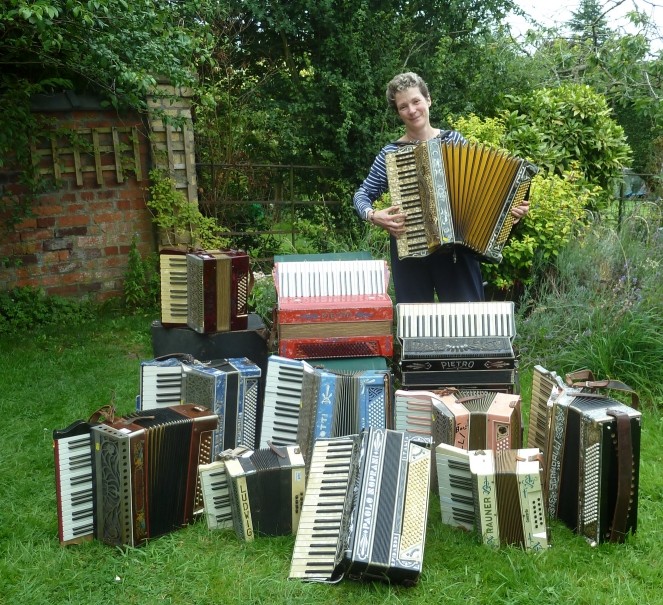
The collection of vintage instruments awaiting restoration.
January 2017
- The alternate bellows design is ongoing and I am about 25% through making the parts (mainly the fibreglass flats).
- I have started modelling some of the main elements and I have weighed the parts of the Scandalli (listed below)
- I have a meeting tomorrow (23rd Aug) with a friend Jim Woodhouse who is a professor at Cambridge University. I met Jim at violin making classes in the mid 60's and we co-operated in tuning the plates of some violins replicating the work of Carleen Maley Hutchins
Carleen was also involved in the use of carbon fibre for the front of violins. click here to read the article.
I am hoping to gather some insights from Jim into the acoustics of the Accordion and to understand what is important to the tone production.
- I have been looking at the keyboard with a view to making it lighter and to have less inertia - it is the inertia that makes fast playing so tiring. It looks as though it may be possible to re-arrange the valving more like the melodica so that it is closer to the pivot thus reducing the inertia of the keys. This make another change possible. Once the keyboard valving is nolonger in direct contact with the reedblock mounting face it becomes possible to change the position of the keyboard and even make it adjustable. I will need to do a 3D model to see if there are any mechanical problems and there may be acoustic reasons why it won't work but I plan to do some simple prototyping to see.
- Body lightening - the Body is the heavest part of the instrument and a lot of it seems to be merely a protective covering for the mechanisms. It is mainly thick wood and usually rather crudely constructed. It should be possible to replace a lot of it with composite mouldings giving a significant reduction in weight, easier access to the internals and a more pleasing or ergonomic shaping.
- Reed blocks - These are around 1/3rd kilo each and it does look as though a lighter design is possible. The Scarlatti has 5 and, if it is possible to get the weight down to under 200grams a total saving of nearly a kilo is possible.
Project Design Details
Bass end outside cover
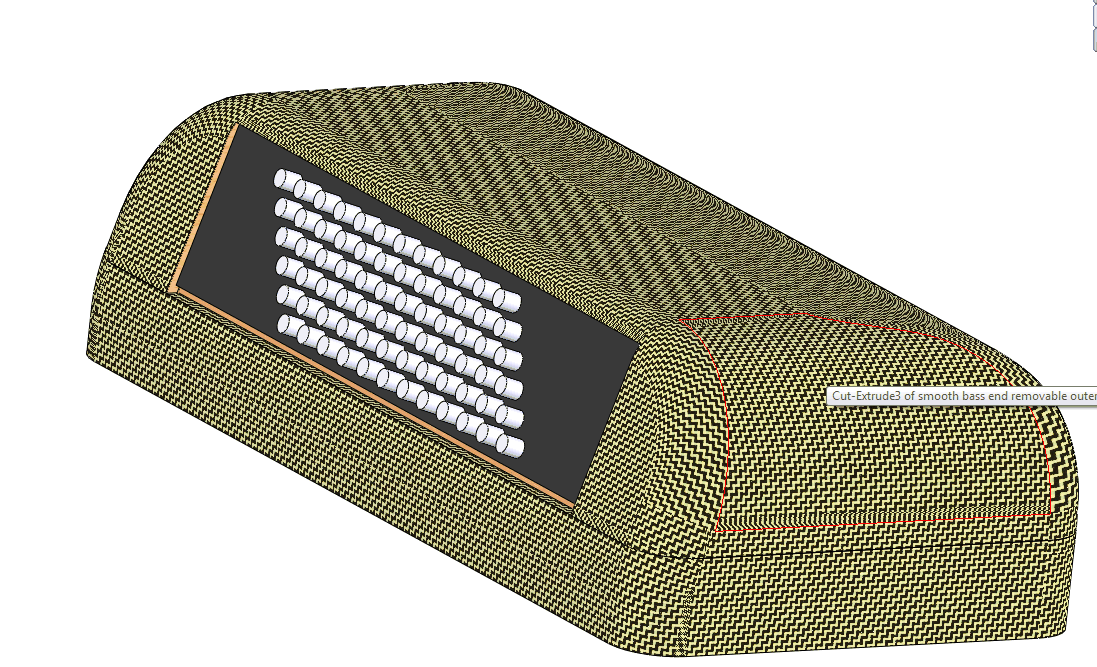 |
I have looked at the bass end to see what opportunities to save weight are available and I think that there is the possibility to save a chunk of weight by re-imagining the main elements.
There is quite a lot of weight in the outside of the bass end chassis that is there only to protect the button mechanism. If one strips this away and replaces it with a moulded cover there are several benefits
- The shape of the end can be better with more comfortable curves
- A significant chunk of weight can be saved
- The cover can be easily removed to service the mechanism
|
From Talking to Karen I believe that the weight of the bass end is a significant contributor to the fatigue experienced after playing for any extended time i.e. in a session.
The weight of the bass end has to be supported only by the left arm and, when extended, the effort required is not insignificant.
I have modelled 3 alternative end cover designs to compare the weights.
- Fully moulded in Carbon Fibre to a thickness of 3mm (the minimum for strength) weight = 0.56 Kilo
- fully moulded in Glass fibre = 0.75 Kilo
- Moulded using composite methods, similar to the fusalage of the wartime Mosquito, to a total thickness of 5mm comprising a carbon fibre outer skin approx 1/4mm thick, an inner spacing layer of a 4.5mm thick light material (I have used balsa for my modelling) and a carbon fibre inner skin approx 1/4mm thick. weight - 0.16 Kilo
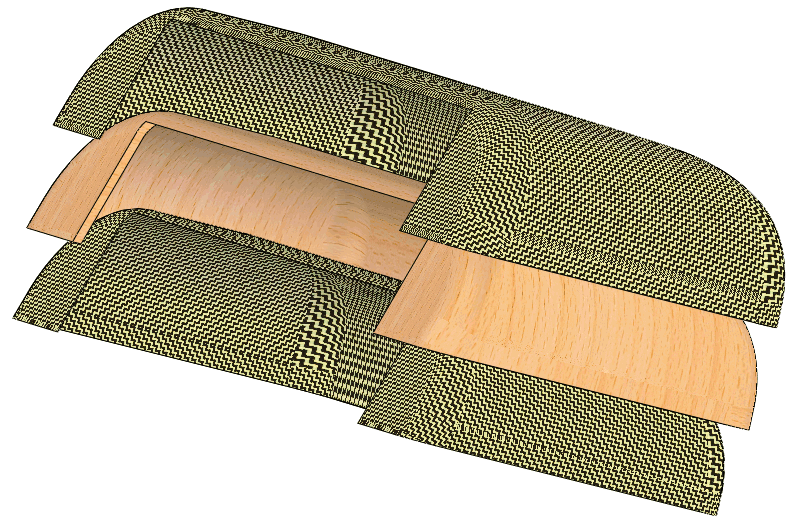 |
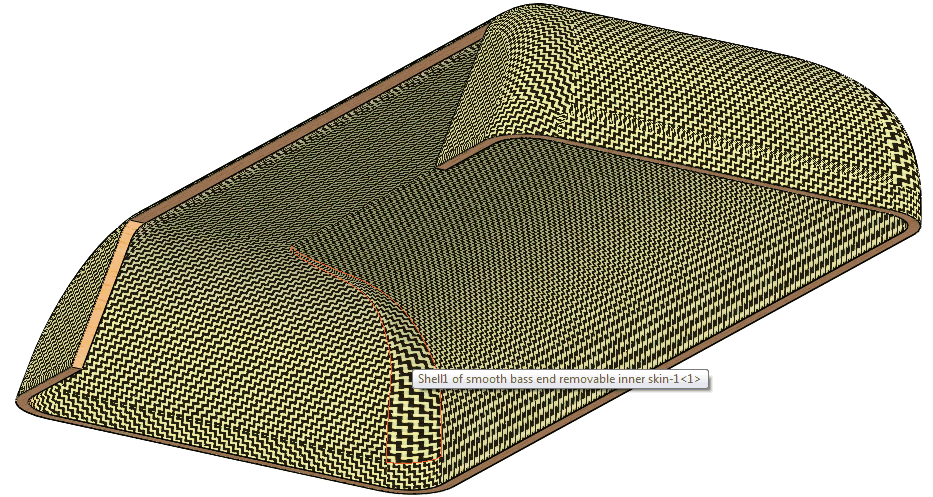 |
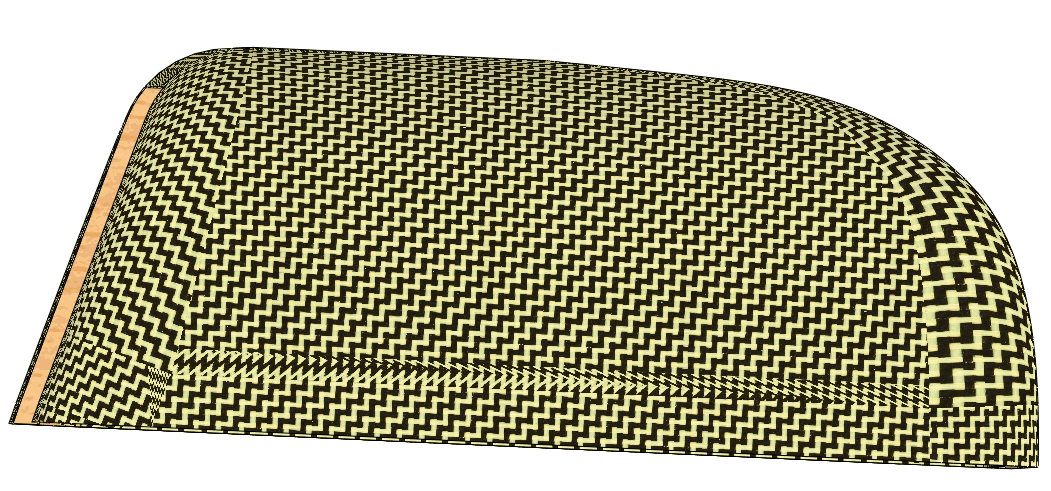 |
| The 3 layers exploded |
View on the underside of the cover |
Side view of the cover |
Bellows
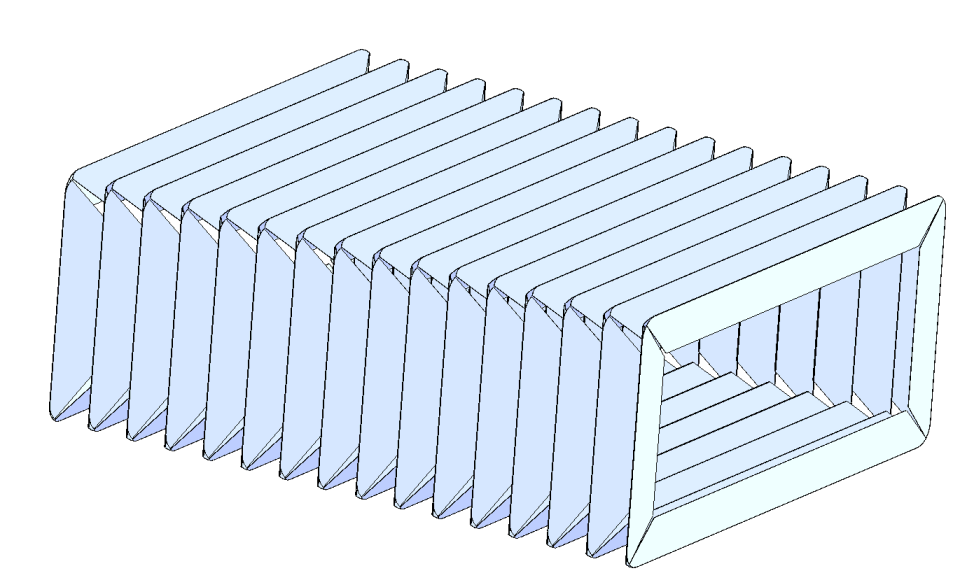 |
My first pass at CAD modelling an alternative bellows construction looks as though a saving of 1/3rd of the bellows weight is possible.
Here is the CAD model so far of my first pass at an alternative bellows construction. The predicted weight at this stage = 0.41Kg which is giving me hope that I can get the weight of the bellows to less than 1kg |
Keyboard
The range should be from the F below middle C to the D 2 octives above.
Reed Blocks
The Scarlatti has 5 blocks of reeds as follows:-
- Bass end, Assembly A 24 reeds in 2 rows of 12 - one row looks as though it is an octave below the other and they sound simultaneously.
- Bass end, Assembly B 24 reeds in 2 rows of 12 - it looks as though the 2 rows are in the same octave .
One thing I notice is the the reed banks on each side of the assembly 'A' block are connected together. I have Had a first pass at an alternative design that should be both lighter and cheaper to make and assemble and shouldn't compromise the sound.
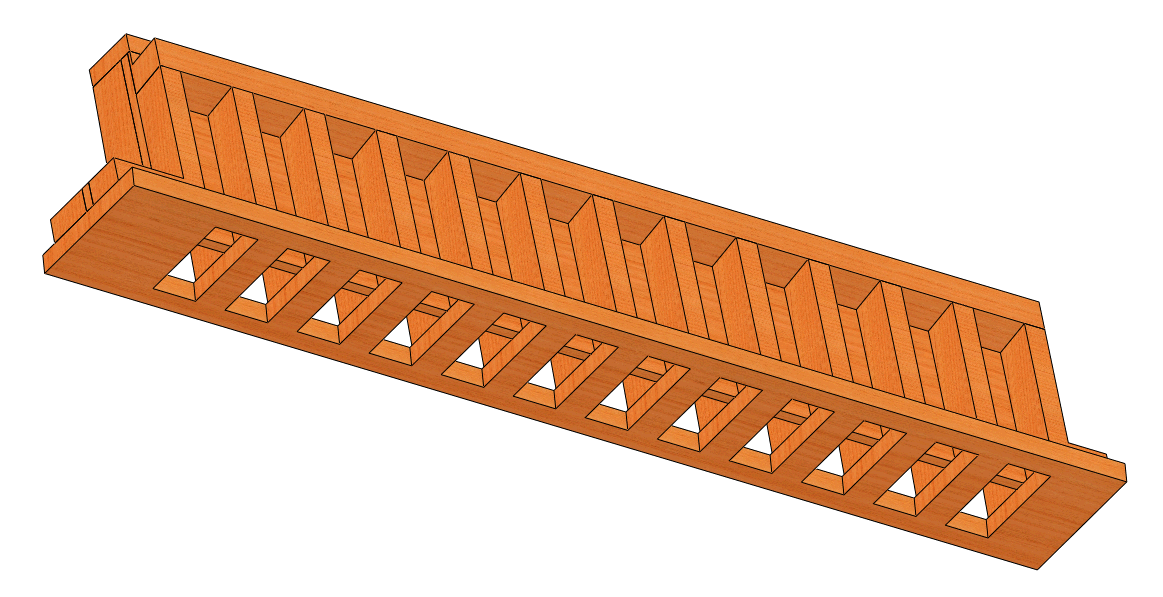 |
I have modelled up the main woodwork of the original bass end reed block assembly A to get an understanding of how it is put together. It looks rather labour intensive to assembly and quite heavy for what it does.
Predicted weight from model = 160gm |
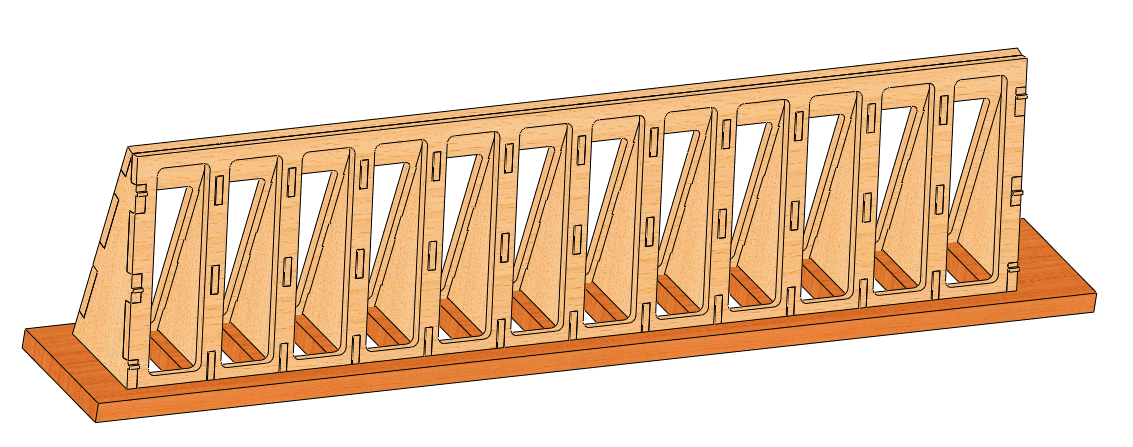 |
Here is my first pass at an alternative design. This gives a possible weight saving of between 20 and 25%. I can't see any reason why this design shouldn't work as well as the one it replaces and it is simple and cheap to make. I am ordering a set of components and I will fit it with a set of reeds and try it in the Scarlatti.
The components are laser cut from ply and this is a very simplified version. I can see that a varient will also work with the keyboard end reed blocks.
Predicted weight from model = 63gm |
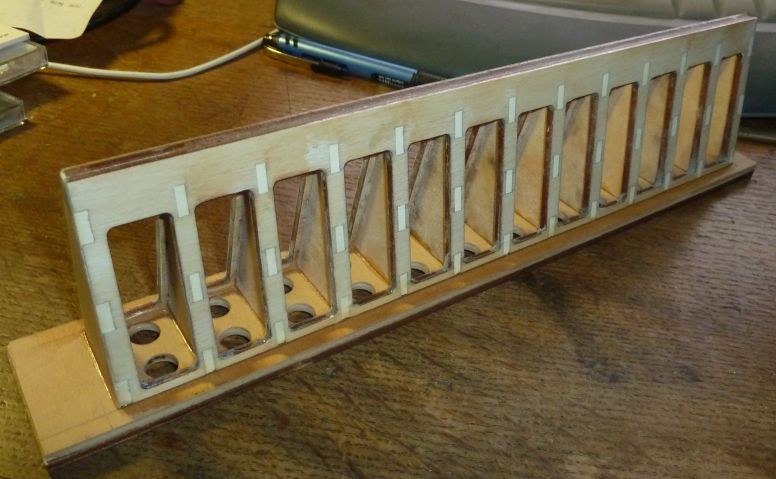 |
I have assembled the prototype parts and it looks OK. Assembly was quite straight forward and would be easy in quantity using an assembly jig. You will notice that the bottom plate is made in 2 parts laminated together and the top one has round holes. The reason for this is that the company doing the laser cutting couldn't cut thicker material (it is to do with the power of the available laser) so I planned to laminate two layers together but due to a mistake on the part of the laser cutting company only one was cut, so, I had to make the extra one and wanted to try the effect of the round holes. The bottom lamination has rectangular holes identical to the original.
Actual weight of prototype = 65gm ( the extra couple of grams over the predicted weight is probably the glue)
|
Victims for data aquisition
Scarlatti 72 bass accordion
This is a second hand instrument supplied for the project by Hobgoblin. As supplied it was broadly in working order with the exception of one bass button that has been pushed right into the body. I was able to rescue this and the bass mechanism works now.
My Plan for this instrument is to see where I can save weight by redesign. I have started by looking at the bellows which seems quite heavy for what it does.
The specification of the instrument as published is as follows:-
- red pearl finish, 3 voice, 34 treble keys, 5 register
- weight = 9Kg
- Dimensions = 59.6 x 59 x 32.6 cm
- Price (Amazon) = £439
Measured weight = 8.3Kg (without straps)
Weight breakdown:-
- Assembled keyboard end = 4.11Kg
- Keyboard voice button assy = 0.12Kg
- Reed bank (C) = 0.36Kg
- Reed bank (D) = 0.35Kg
- Reed bank (E) = 0.33Kg
- Bellows = 1.376Kg
- Bass end complete = 2.8Kg
- button mechanism = 0.65Kg
- Bass body including valves and valve plate = 1.21Kg
- Bass reedblock (A) = 0.41Kg
- Bass reedblock (B) = 0.29Kg
Scandalli 120 bass Accordion
The project has acquired a rather tired Scandalli accordion so that we can take it apart and look at the possibilities. Here are the pictures from Ebay and we will add more as we get into the instrument.
If anyone knows the model and approx age it would be interesting (email above)
The weights are as follows:-
- entire bass end = 3.6 kilo
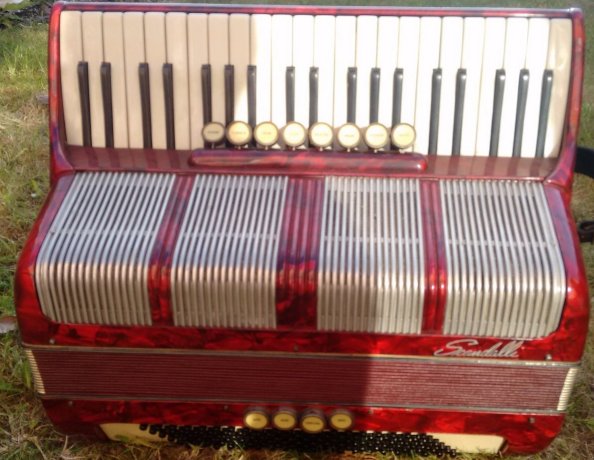
Instrument as bought |
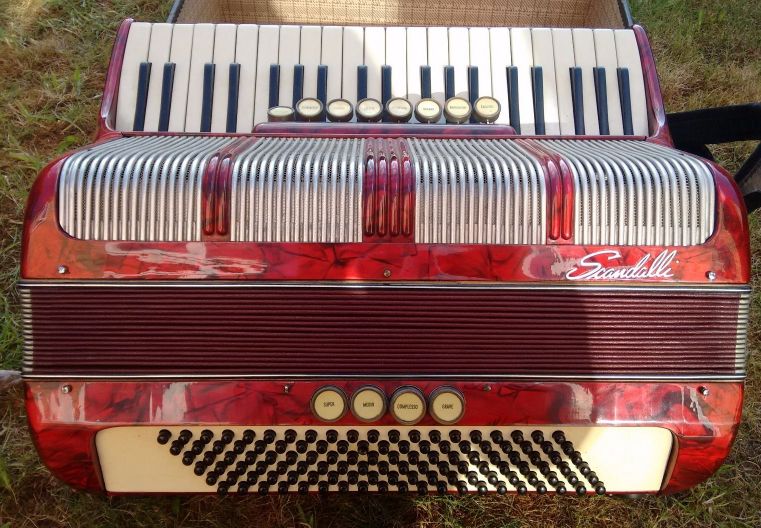
Bass end |
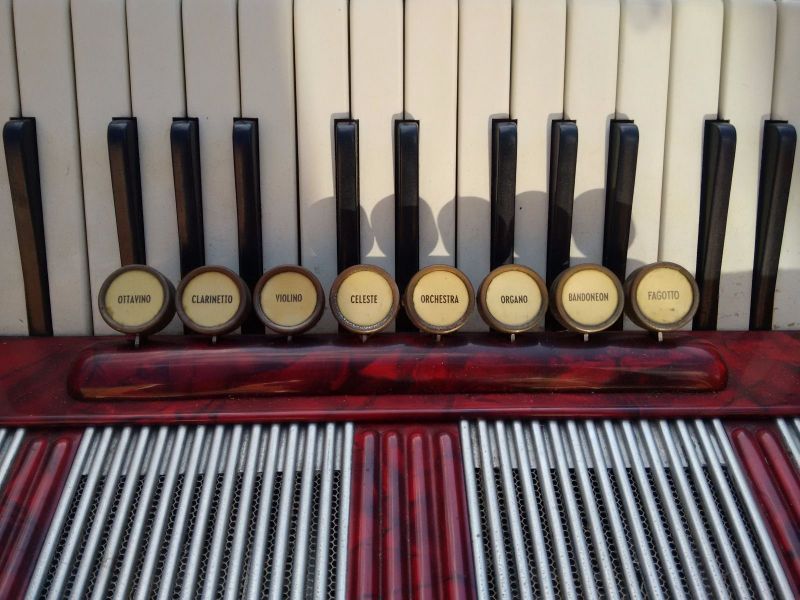
Treble end |
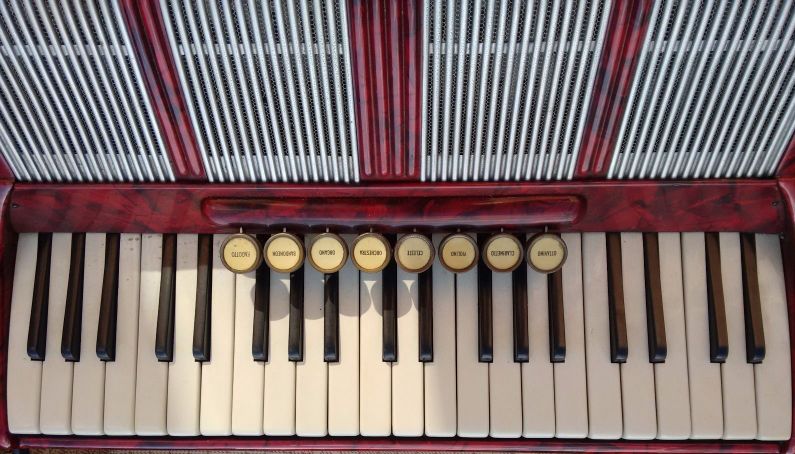
Keyboard |
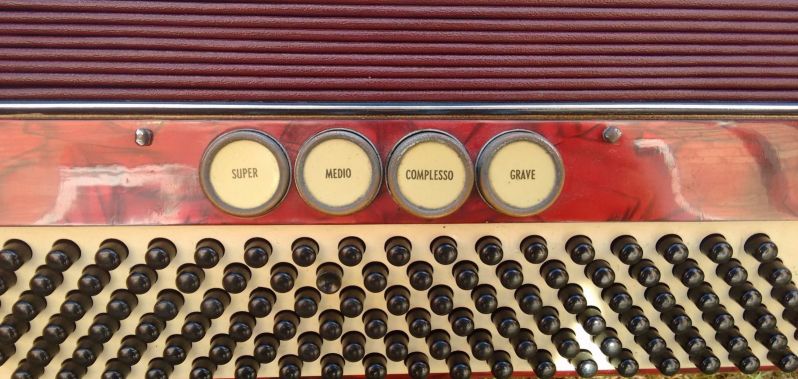
Bass couplers |
The Scandalli as received from the postal service
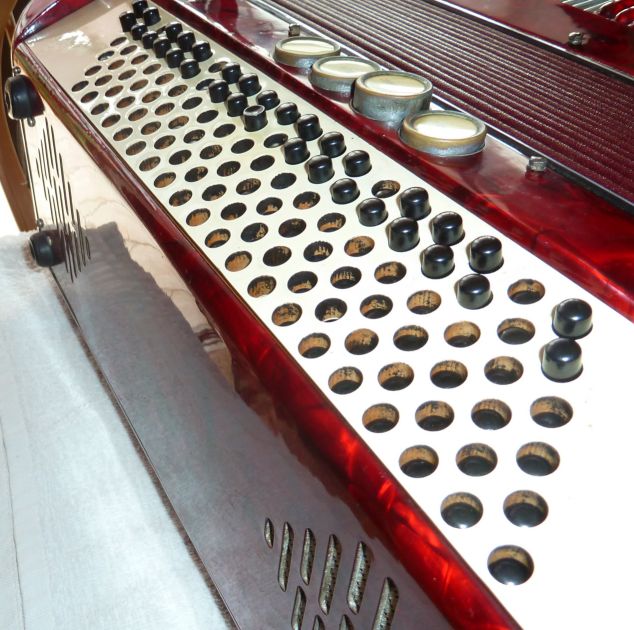 |
Instrument as delivered - most of the bass buttons have been shaken inside the body in transit
I understand that this is a common problem and I have an idea to make it a thing of the past!! |

|
The bass end valves. One of the coupling links between the 2 rows of valves is missing (later found inside the instrument). |
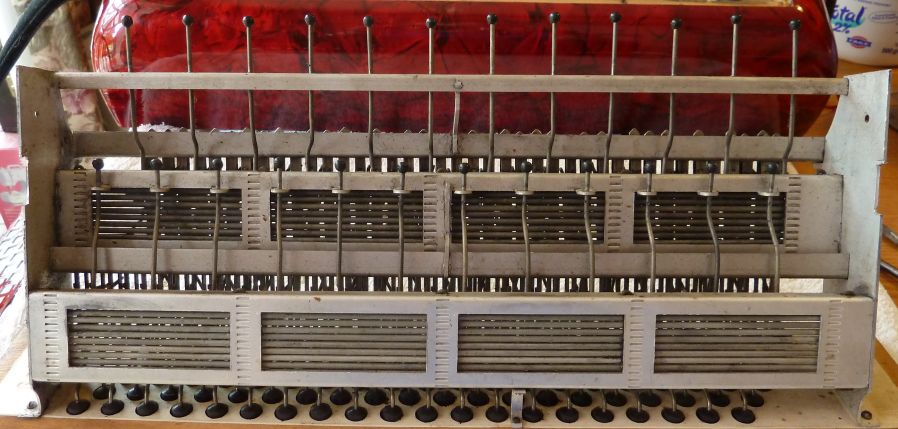 |
view on the underside of the bass mechanism (after I had repaired it after the ravages of the postal system). |
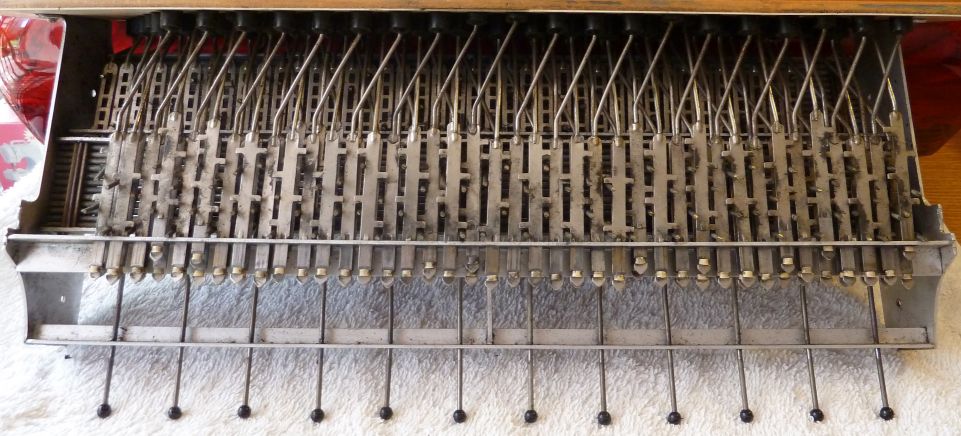 |
The front of the bass mechanism after repair. |
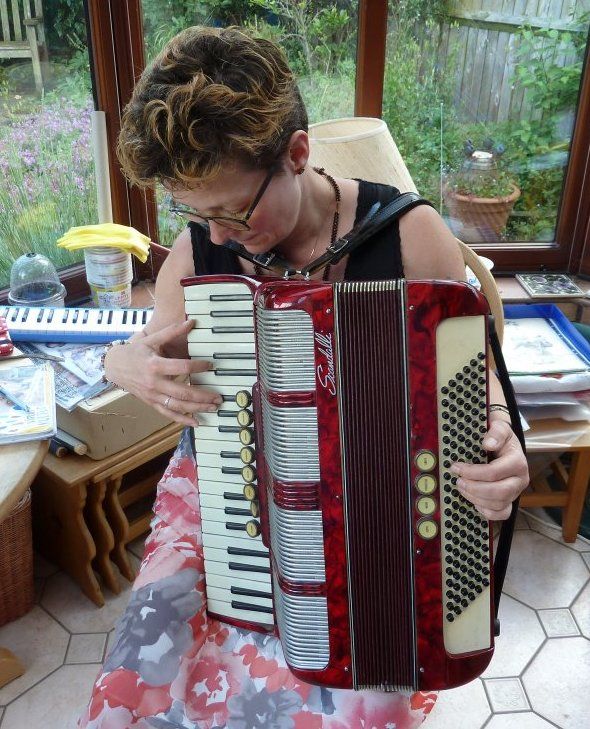 |
Karen playing the Scandalli after I had sorted the bass end and put it back together.
There is more to do to refurbish this instrument!! |
Scarlati Melodica Model SME-37
This is a very simple mouth blown instrument with a retail price of £25 and is included here to spark ideas on simple mechanisms. This instrument is a broken one provided by Karen.
Click on a picture to view at full size.


Picture 1 |
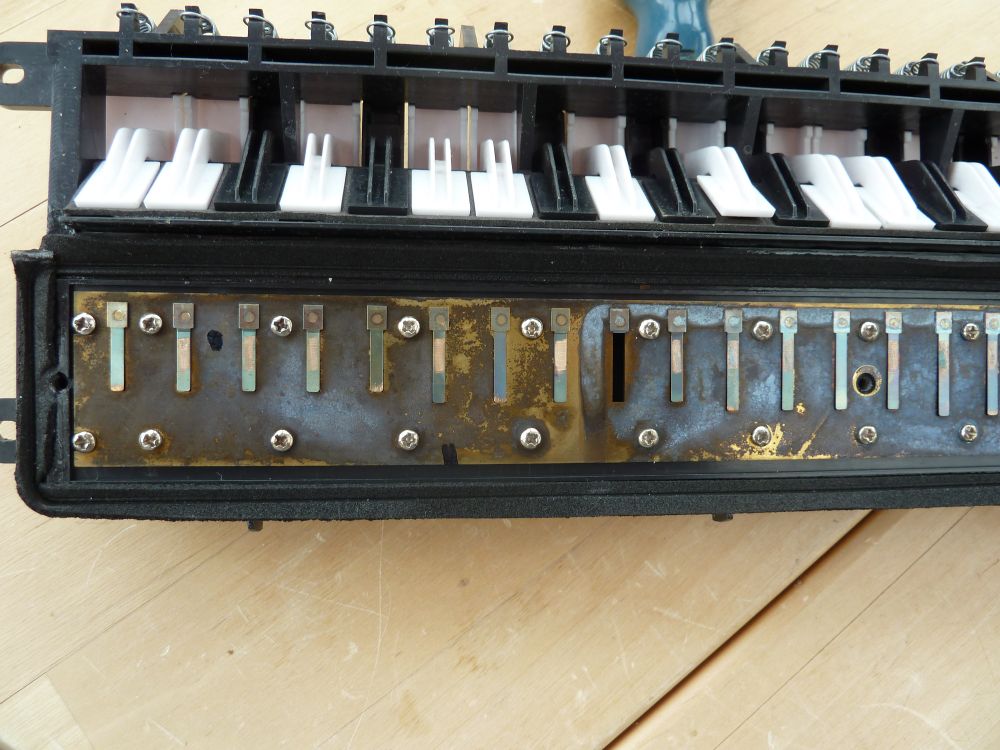
Picture 2 |

Picture 3 |

Picture 4 |

Picture 5 |
- Picture 1 shows the view on the bottom of the instrument with the cover removed. The reed bank is divided into 2 blocks and there are only 8 different lengths of reed.
- Picture 2 is a closer view on the reed bank. The note that doesnt play can be clearly seen and the tongue of the reed has broken off probably due to fatigue.
- Picture 3 is a single key. This is a fairly simple moulding and weighs only 4.6 grams.
- Picture 4 is the bank of springs. The key starts to move when a force of 55 grams is applied and when fully depressed the force is 66 grams (this is very close to the forces I found ideal when I was designing the keyed school bagpipes)
- Picture 5 shows the simple pivot for the keys.
This design is extreemly simple and very well thought out. It is presented here as there may be ideas that can be used in the accordion project.
Go back to Mike Nelsons Home Page
This site is created and maintained by Mike Nelson for his own pleasure
© 1997 to 2016 Mike Nelson















